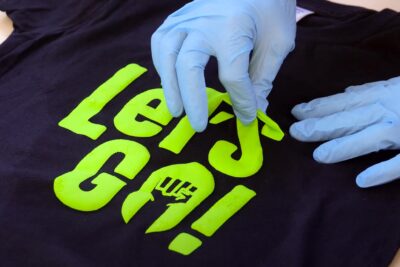
🤩DTF Printing: A Game-Changing Technique For Your T-Shirt Business
🤩DTF Printing: A Game-Changing Technique For Your T-Shirt Business
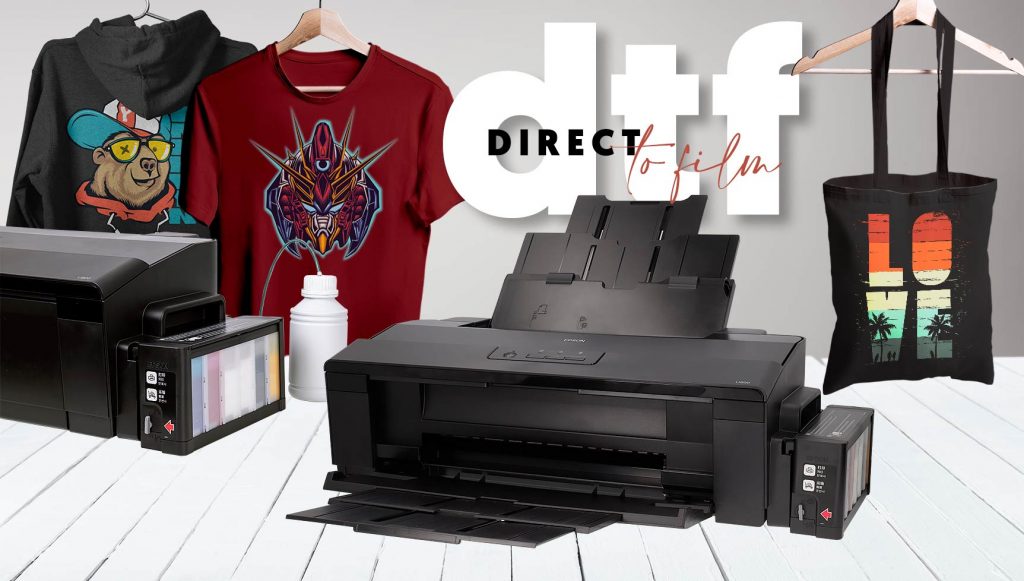
What is DTF printing?
I’m sure you've heard of DTF printing before but may not be familiar with how it works. Or perhaps you got it confused with DTG printing.
DTF stands for Direct To Film. This technique involves printing your design directly onto a film and then transferring it to a T-shirt made of cotton, polyester, or their blends, regardless of their colour, as it can work with white ink.
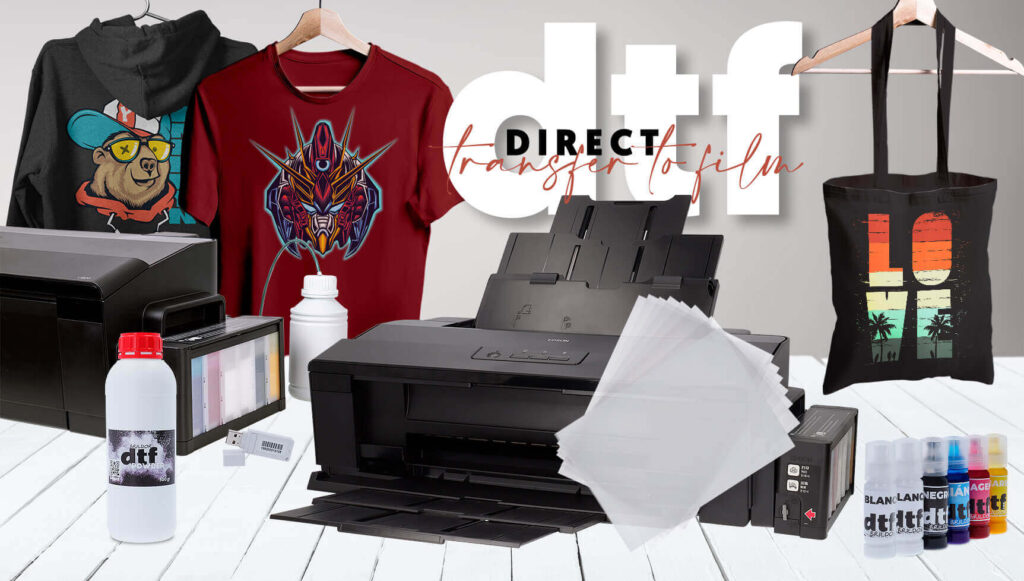
Although it may seem that DTF printing is a variant of transfer printing, it requires a desktop inkjet printer equipped with textile inks specially designed for DTF printing.
How to print DTF transfers?
A great advantage of this technique is that the white ink layer is printed simultaneously as the coloured ink. This feature makes it a very simple alternative compared to other methods such as white toner.
If you’re working with DTF, you should know that the valid formats for printing your designs are the following: eps, ps, pdf, bmp, tif, jpg, png, and psd.
We have prepared the following video to show you step-by-step how to print DTF transfers on a dark cotton t-shirt:
What do I need to print DTF transfers?
Now that you know about DTF printing and what you can achieve with it, you may be wondering what equipment you need and how much of an investment it will be for your business.
What you’ll need
Let’s start by listing the equipment and machinery you’ll need:
- Inkjet printer modified for DTF printing with 6 ink channels CMYK+White: At Brildor, we have the first adapted DTF printer with all the necessary hardware modifications.
- Special inks for DTF printing: these very elastic inkjet inks prevent the print from cracking when stretching the garment after printing.
- DTF film: it's the surface on which you print your design.
- DTF powder: it acts as an adhesive between the inks and the cotton fibres.
- RIP software: necessary to print CMYK and white-coloured layers correctly because, as mentioned before, the printer has been modified and wouldn’t be able to print in the correct order by itself.
- Heat press: we recommend a press with an upper platen that lowers vertically to make the DTF film’s curing process easier.
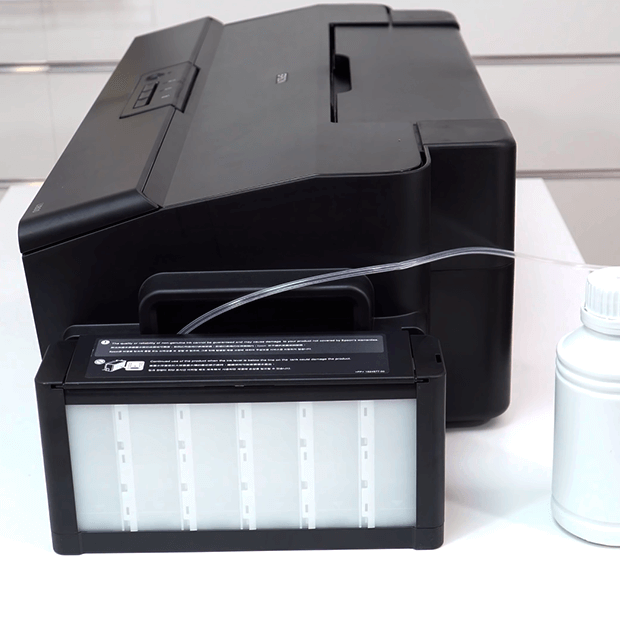
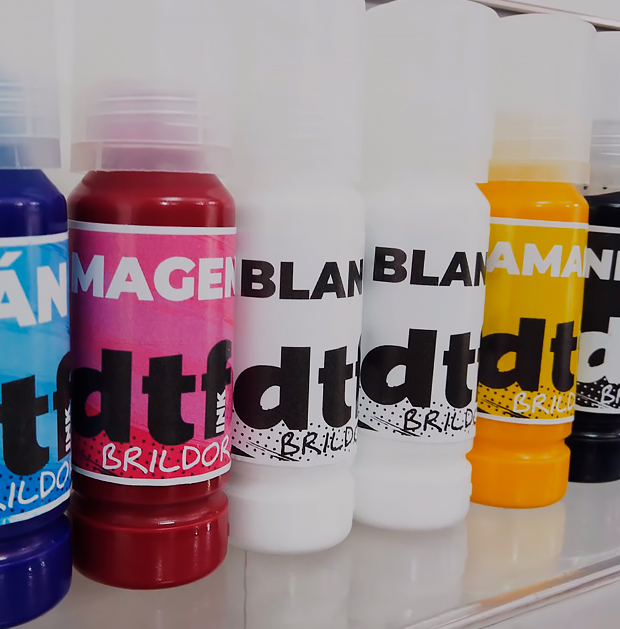
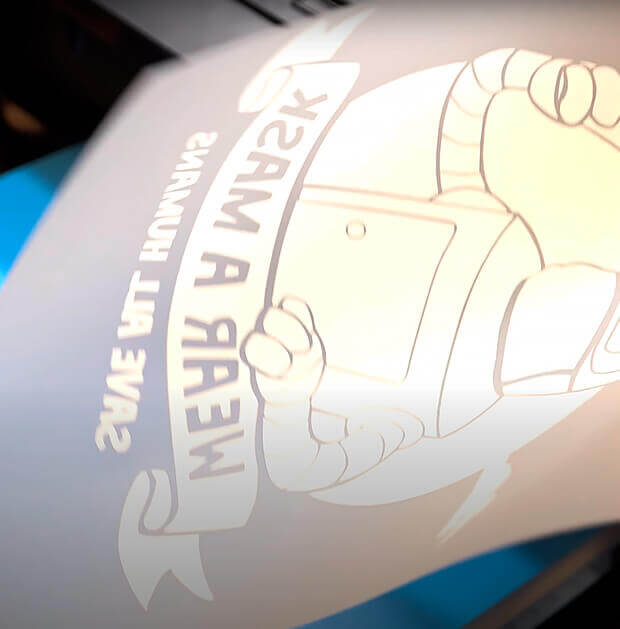
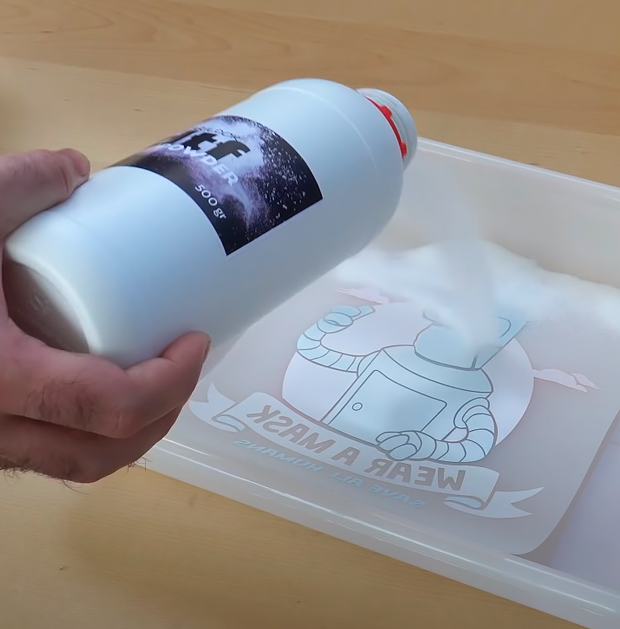
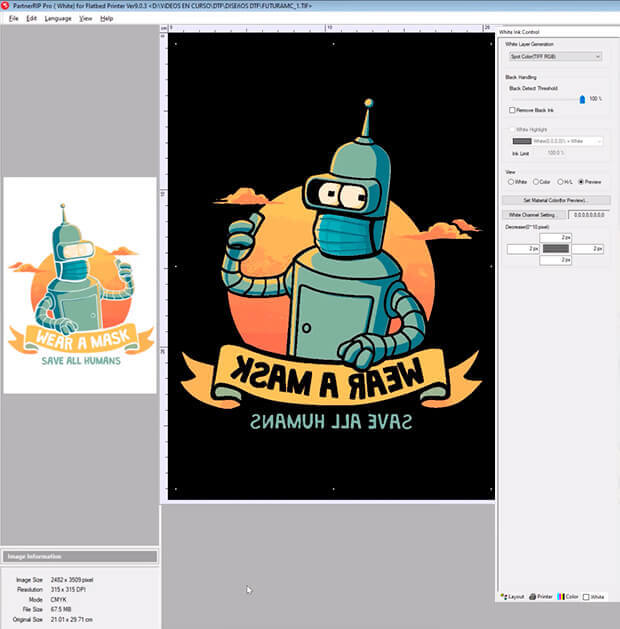
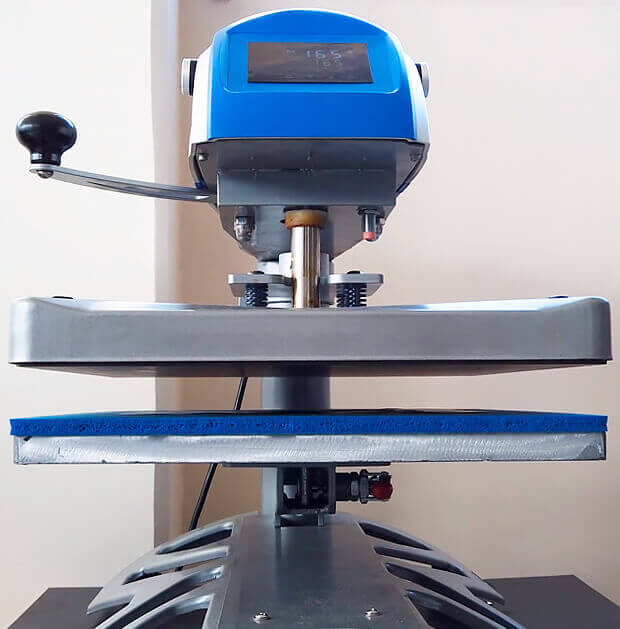
How much does DTF equipment cost?
Now let’s look at the investment needed to integrate DTF printing into your T-shirt personalisation business. This is, in fact, one of the great advantages of this personalisation technique, as you can get yourself a complete kit (printer + consumables) for less than €1500 (≈ £1248), ready to install in your workshop and pay back your investment in no time.
You will find a low-cost DTF starting kit in our online shop that includes an A3 printer, RIP CADlink Digital Factory v10 DTF Edition DTF software and all the consumables you need to get started.
In addition to the DTF printer and its consumables, you will need a heat press or an oven to cure the ink printed on the film. If your company already has this equipment, you will only need to purchase the kit mentioned above.
The heating platen must be at the same height over the entire printing surface when curing the ink. Therefore, we recommend using a press with an upper platen that lowers vertically so that its height can be adjusted. We recommend our Brildor XH-B2N press, equipped with this feature.
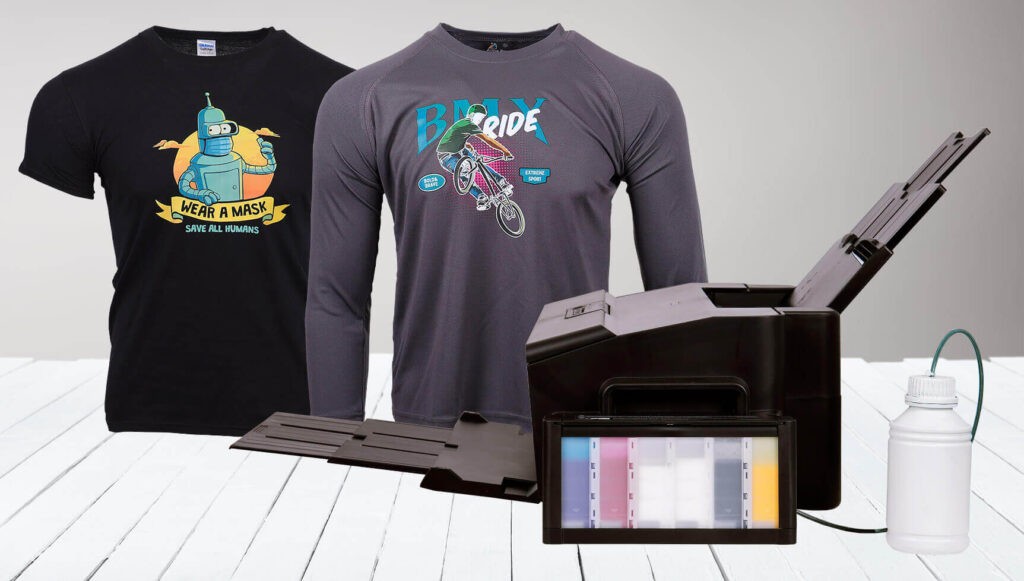
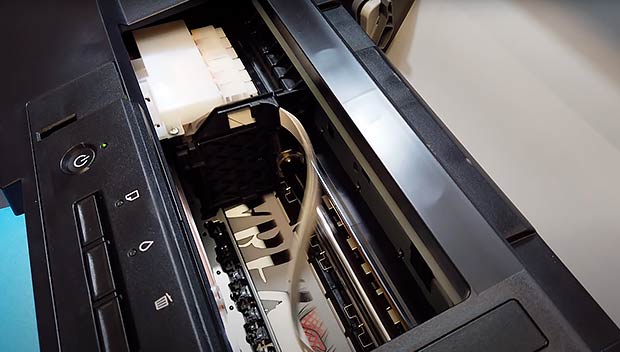
Differences between DTF, DTG and White Toner printing
We could say that DTF printing combines DTG printing and white toner. That’s why comparing them can be a little bit confusing. Let’s analyse their differences to help you find the technique that best suits your needs.
DTF vs DTG printing
The abbreviations DTF and DTG are very similar, and both techniques use an inkjet printer with white ink. How are they different?
- The investment: DTF printing requires a very low investment compared to the cost of a DTG printer. A DTF kit costs almost one-tenth of the price of a DTG printer.
- Production time: DTF printing starts by printing a design on a film. You must then add DTF powder to it. The printed film will then have to be cured, and the design transferred from the film to the fabric. With DTG printing, the printer prints directly onto the garment, which reduces production time significantly compared to DTF printing.
- Print touch and finish: DTF has a slightly “plastic” finish, very similar to HTV or screen print transfers. However, the inks are very elastic, which prevents the print from cracking when the garment is stretched. With DTG printing, the ink is completely absorbed into the garment, resulting in a much finer finish and better integration with the fabric.
- White intensity and purity: in this case, DTG printing produces a purer and more intense white. In the case of DTF, white isn't as pure and intense.
- Consumable costs: both techniques have low production costs. Although it may seem that DTF printing is more expensive because it uses more supplies in the printing process, the final cost of a T-shirt printed with this technique is slightly lower than that of a T-shirt printed using DTG printing.
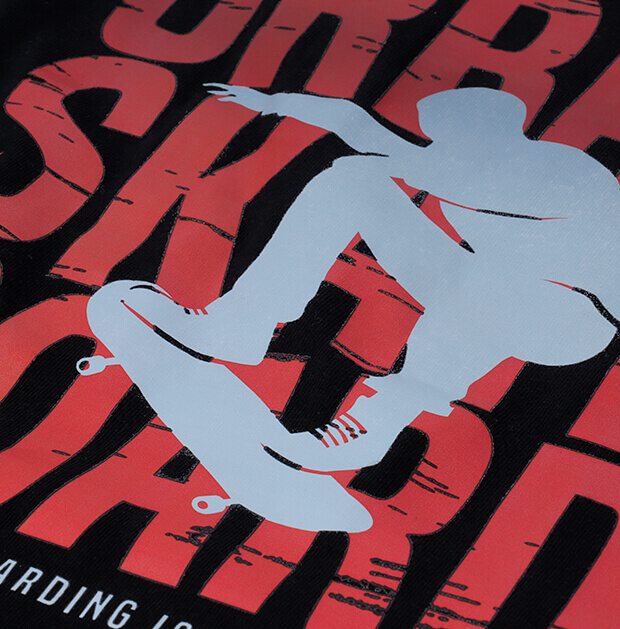
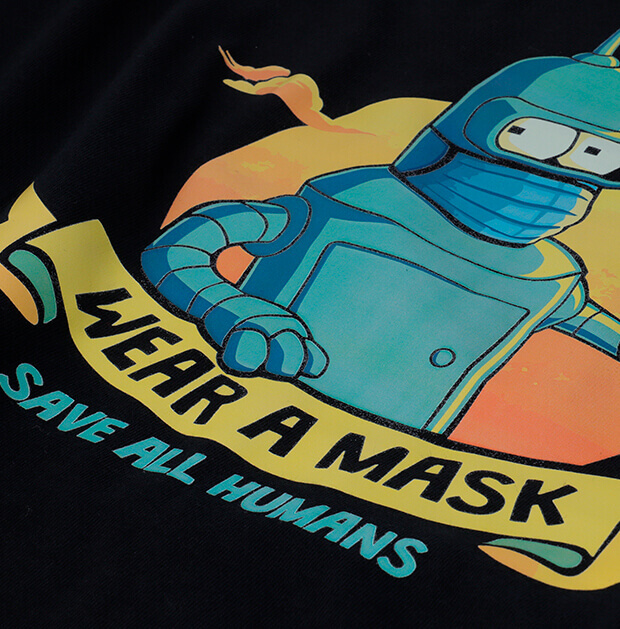
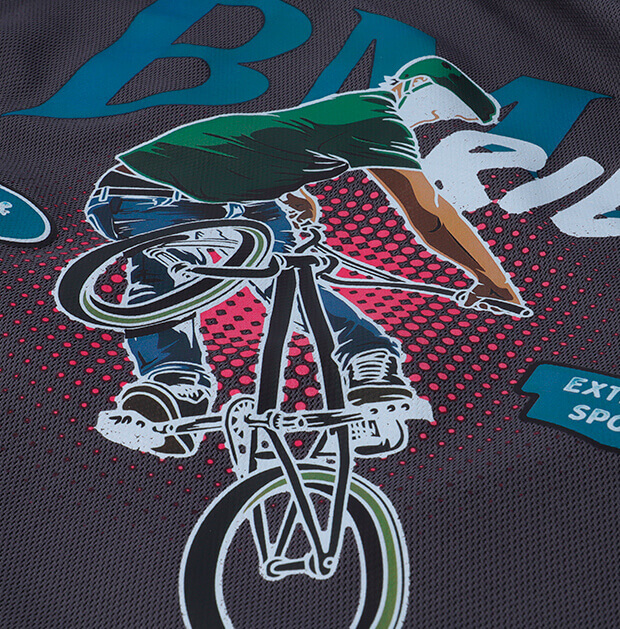
DTF Printing vs White Toner
The similarity here lies in the production process, as you must print the design before transferring it to the T-shirt. The result is also very similar in feel. Let’s analyse the differences between T-shirt personalisation using DTF printing and low-cost white toner.
- The investment: a DTF kit costs less than a laser printer, about half the price of a Uninet or OKI laser printer.
- Printing process: DTF is much simpler than white toner, as the white layer is printed at the same time as the colour layer (compared to low-cost white toner systems).
- Weeding FOREVER NO CUT transfers: with the white toner technique, you will need to press the printed paper A onto paper B to add the adhesive and weed it. This step is the most delicate because the transfer could be damaged and cause expensive production losses if the weeding isn't done properly. With DTF printing, this step doesn’t exist, saving you time and money.
- Print touch and finish: the finish has almost the same feeling to the touch for both techniques. The main difference is that DTF inks are textile and provide greater elasticity and wear resistance.
- White intensity and purity: in this area, white toner provides a more intense white colour.
- Consumable costs: white toner has much higher printing costs than DTF printing because of the toner and NO CUT transfer papers required for its application. A personalised T-shirt printed with a DTF printer has a 50% lower production cost than a T-shirt printed with white toner.
- Different projects possible: DTF printing is a technique that can be used mainly on textiles, whereas white toner laser printing opens up a wide range of possible projects. In addition to this type of product, it is also possible to personalise rigid objects in colour.
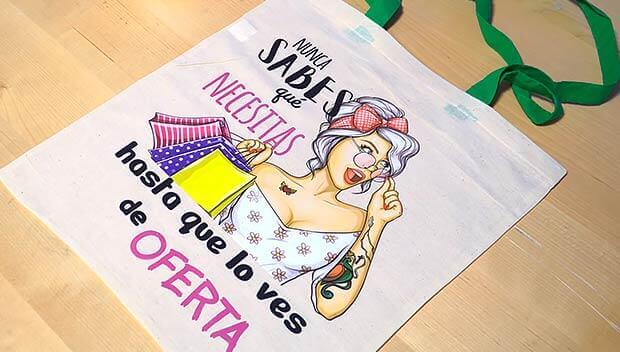
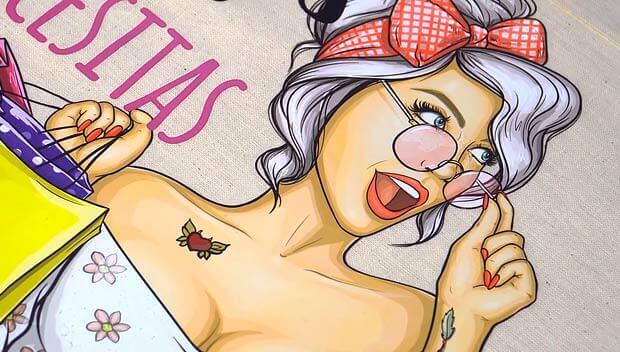
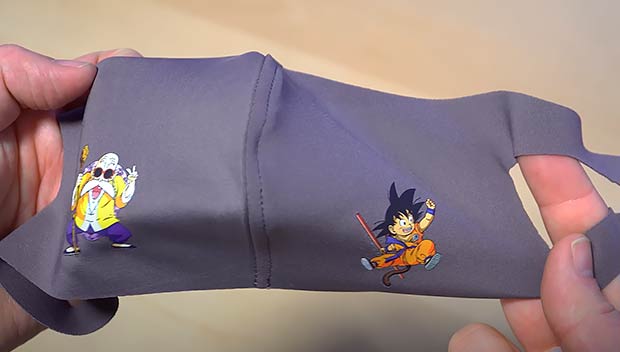
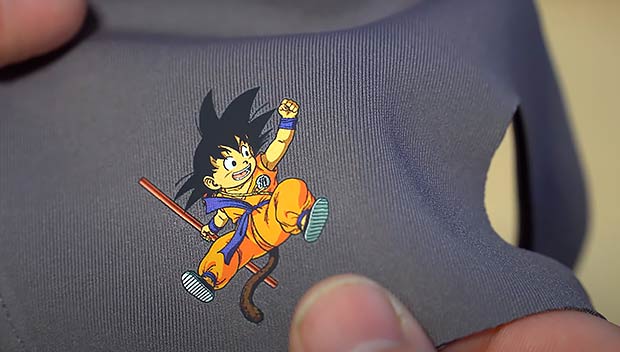
Pros and Cons of DTF
To summarise, let’s make a quick recap on both the advantages and disadvantages of personalising a T-shirt with a DTF printer.
Pros
- Low investment
- You can print on T-shirts of any colour or fabric
- Very elastic prints that won’t crack when stretching the fabric
- Very high wash and wear resistance
Cons
- The print feels slightly plasticised, similar to what you would feel with a screen print transfer or HTV.
- The printing process is more complex than other techniques such as sublimation or DTG.
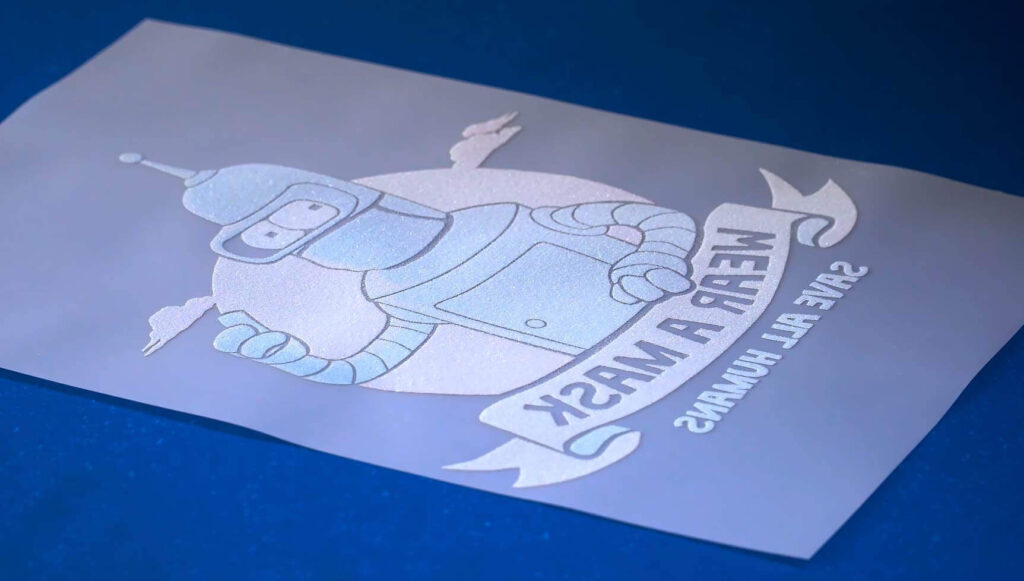
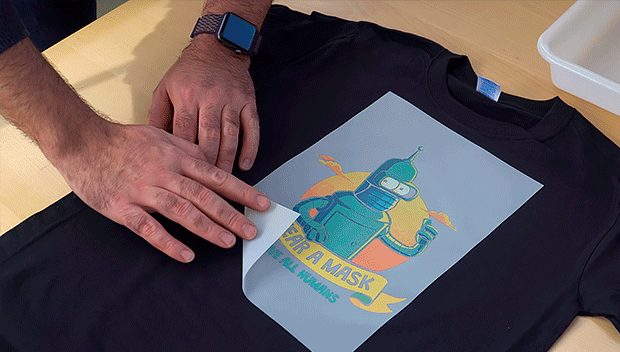
Is DTF printing what you’re looking for?
DTF printing is perfect for anyone looking to include T-shirt personalisation, or any other textile product (cushion covers, masks, bags, sweatshirts, etc.) into their cotton or polyester business (and their blends of any colour), with a low starting investment.
If you have any questions or if we have left anything out, leave us a comment so we can help you. You can also contact our Customer Service department.
Remember to check our social media, where we post plenty of ideas, offers and news from all areas of personalisation. Follow us on Instagram and Facebook to make sure you don't miss anything. Don't forget to subscribe to this Blog and to our Youtube channel.
If you liked it, don't leave without leaving your five stars!
See you soon in a new post!
-
Thanks for sharing this great tips.
WE WANT TO KNOW WHAT YOU THINK

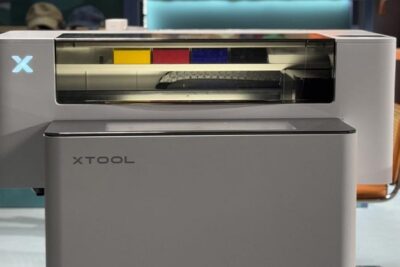
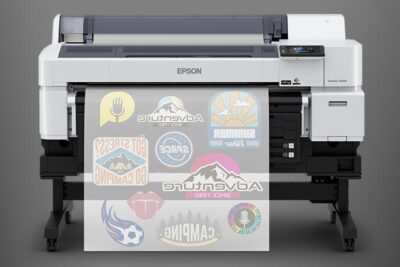
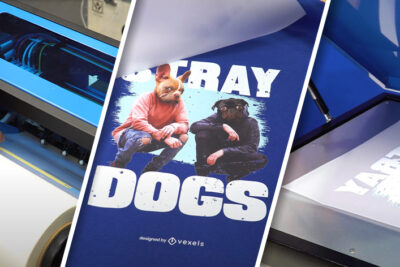
You may also like